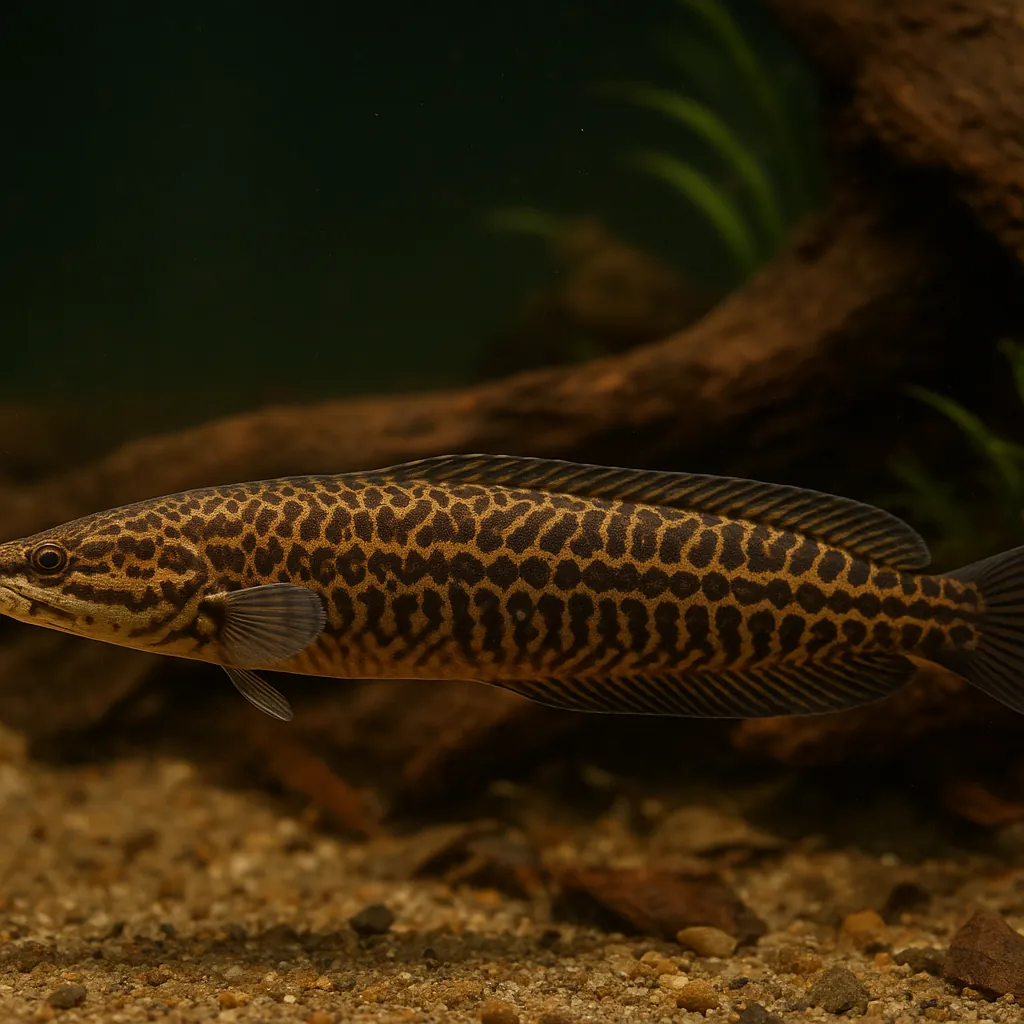
Tire track eel
Introduction
The Tire Track Eel, scientifically known as Mastacembelus armatus, is a captivating addition to freshwater aquariums, renowned for its distinctive pattern resembling tire tracks. This unique appearance, combined with its intriguing behaviors, makes it a favorite among aquarists seeking something beyond the typical fish. While their care requires attention to specific needs, the rewards of observing their nocturnal activities and interactions are well worth the effort.
What makes the Tire Track Eel stand out in an aquarium?
Its elongated body adorned with intricate, maze-like patterns offers a visual appeal unmatched by many other species.
Is the Tire Track Eel suitable for beginners?
Due to its size and specific care requirements, it's better suited for aquarists with some experience.
Care and Environment
Proper care for the Tire Track Eel involves creating an environment that mirrors its natural habitat and meets its physiological needs.
What size tank is appropriate for a Tire Track Eel?
A minimum of 284 liters (75 gallons) is recommended for a single adult, with larger tanks preferred to accommodate their active nature.
What are the ideal water parameters?
Maintain temperatures between 22-28°C, pH levels of 6.0-7.5, and water hardness of 5-15 dGH.
How should the tank be set up?
Use a soft, sandy substrate to facilitate their burrowing behavior. Provide ample hiding spots with caves, driftwood, and PVC pipes. Dim lighting and floating plants can help replicate their natural, subdued environment.
What should they be fed?
They are carnivorous, preferring live or frozen foods like bloodworms, brine shrimp, and small fish. Over time, they may accept high-protein pellets or sinking wafers. Feeding in the evening aligns with their nocturnal habits.
Are there any specific challenges in keeping them?
They are known escape artists, so a tightly secured lid is essential. Additionally, they can be territorial, especially if they feel threatened, so choosing non-aggressive tank mates is crucial.
Origin and Habitat
Native to Southeast Asia, the Tire Track Eel inhabits countries like India, Thailand, and Sumatra. They are typically found in slow-moving or still waters such as rivers, floodplains, and lakes. These environments often feature soft substrates, abundant vegetation, and ample hiding spots, providing the eels with both food sources and protection.
What type of environments do they prefer in the wild?
They thrive in slow-moving or still waters with soft substrates and abundant vegetation.
How does their natural habitat influence their care in captivity?
Replicating these conditions in the aquarium, such as providing soft substrates and ample hiding spots, helps them feel secure and exhibit natural behaviors.
Temperament and Compatibility
The Tire Track Eel is generally peaceful but can become territorial, especially if threatened. They are nocturnal and prefer to stay hidden during the day, becoming more active at night.
Can they be kept with other fish?
Yes, but tank mates should be chosen carefully. They should be non-aggressive and too large to be considered prey. Small fish like neon tetras are not recommended.
Is it advisable to keep multiple Tire Track Eels together?
They can be territorial towards their own kind, so it's best to keep them singly unless the tank is large enough to accommodate multiple territories.
Interesting Facts
The Tire Track Eel is not a true eel but belongs to the spiny eel family, characterized by spines running along their backs. They are known for their burrowing behavior, often burying themselves in the substrate with only their eyes exposed. Additionally, they are adept at escaping from tanks, so a secure lid is essential.
Why are they called Tire Track Eels?
Their distinctive pattern resembles tire tracks, giving them their common name.
Are they difficult to breed in captivity?
Yes, breeding them in captivity is challenging and rarely achieved.
Sources
All information in this article has been gathered from the following reputable sources:
Overview
Recommended Tank Size 125 Gallons (for optimal conditions) |
Minimum Group Size 1 |
Minimum Tank Volume 75 Gallons |
Maximum Adult Length 35.8 inches |
Average Adult Length 29.5 inches |
Shoaling (6+ required) No |
Preferred Water Type Freshwater |
Temperature Range (°C) 22-28 |
pH Range 6.0-7.5 |
Water Hardness (dGH) 5-15 |
Typical Lifespan (years) 10 years |